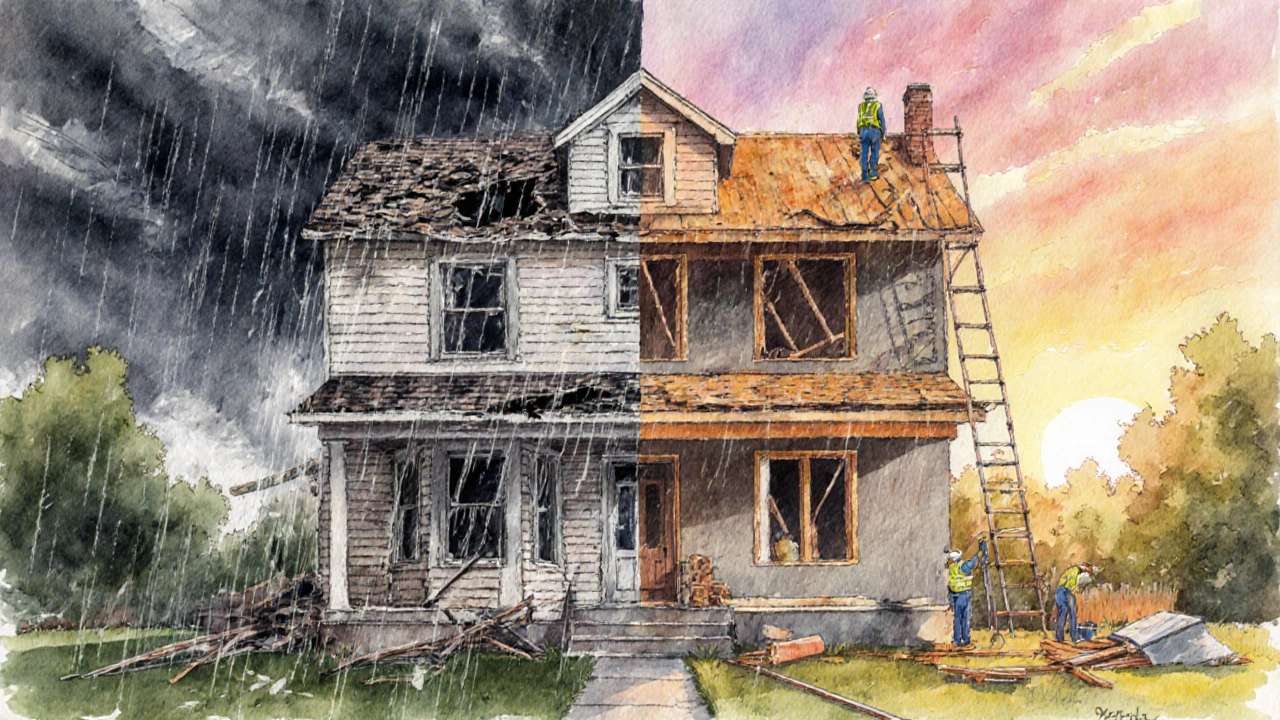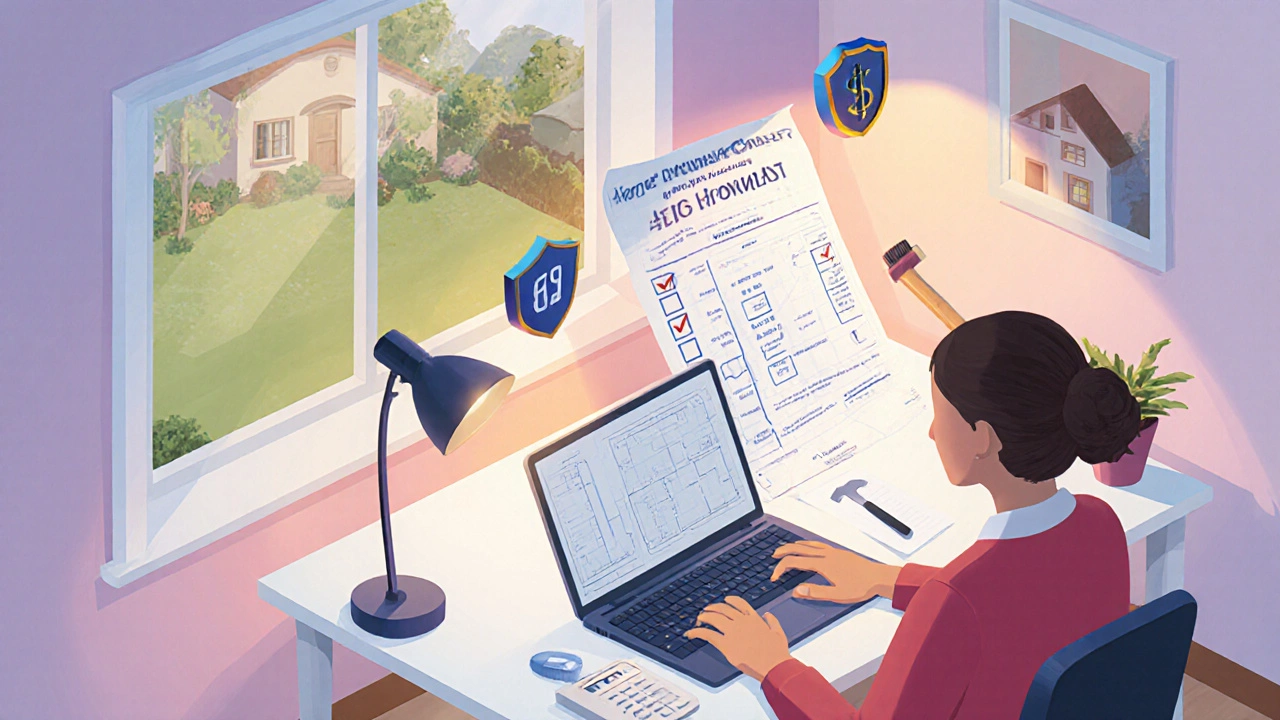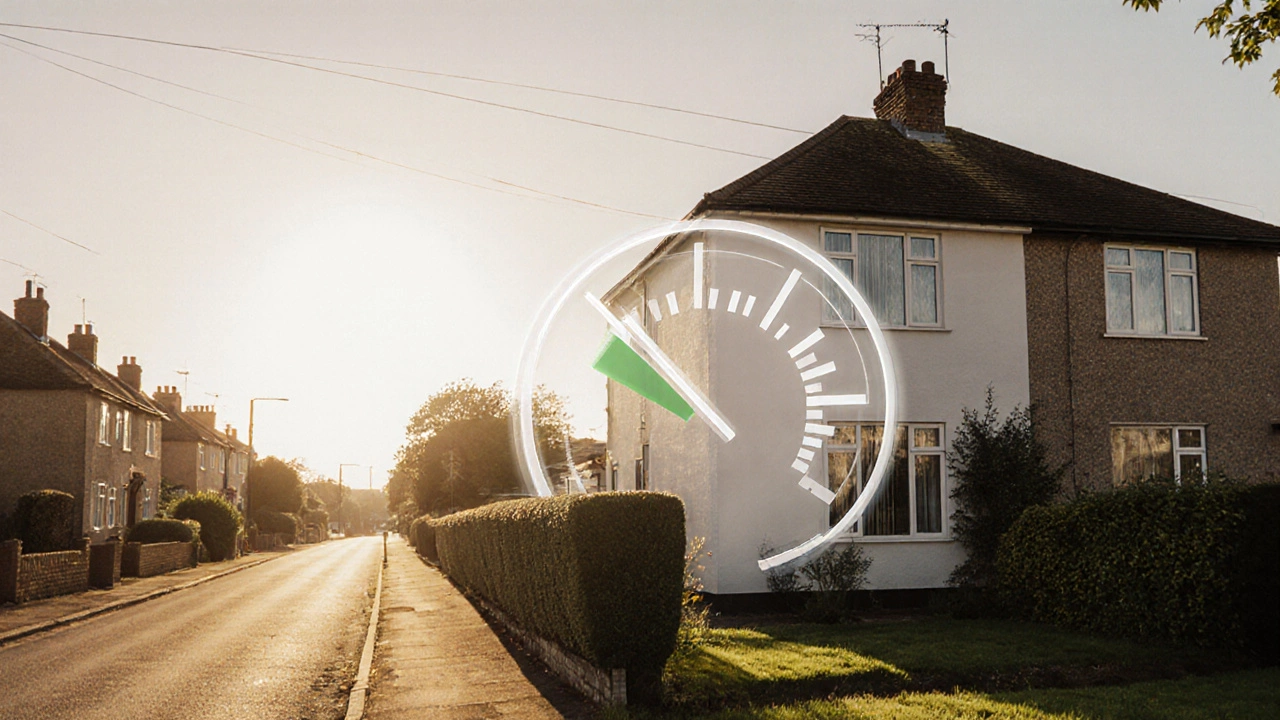Homeowners Insurance Coverage Calculator
Home Information
Valuation Method
Replacement cost covers the full rebuilding cost without depreciation. ACV subtracts depreciation.
Deductible Options
Higher deductibles lower premiums but increase out-of-pocket costs after a claim.
Estimated Coverage Needs
What This Means
Key Recommendations
Key Takeaways
- Dwelling coverage limit is the single biggest driver of protection.
- Choose replacement‑cost valuation over actual‑cash‑value for a realistic payout.
- Match the coverage amount to the true rebuilding cost of your home, not the market price.
- Keep an eye on deductibles and liability limits - they affect out‑of‑pocket expenses.
- Review your policy annually and adjust for renovations or market changes.
When you’re shopping for homeowners insurance is a policy that protects your house and belongings against damage, theft, and liability, the single factor that can make or break your protection is the dwelling coverage limit.
Understanding Homeowners Insurance
At its core, a homeowners insurance policy bundles several layers of protection. The most common pieces are:
- Dwelling coverage - protects the physical structure.
- Personal‑property coverage - covers your furniture, electronics, and other belongings.
- Liability coverage - shields you if someone gets injured on your property.
- Deductible - the amount you pay out of pocket before the insurer steps in.
Each piece has its own limits and valuation methods, but if you had to pick one thing that determines whether you’re truly covered, it’s the amount you set for the dwelling.
Why Dwelling Coverage Amount Matters Most
Imagine a severe storm levels your roof, destroys the walls, and damages the foundation. Your insurance company will look at the dwelling coverage limit (the maximum the policy will pay for rebuilding your home). If the limit is too low, you’ll be left footing the bill for the difference.
Two valuation methods are common:
- Replacement cost valuation (pays the amount needed to rebuild the home with similar materials).
- Actual cash value valuation (pays the depreciated value of the structure).
Most experts agree replacement cost is the safer choice because it reflects real rebuilding expenses, not a discounted figure that can leave you short‑changed.

How to Choose the Right Coverage Limit
Here’s a quick way to size up the proper limit:
- Get a professional home‑valuation or use an online reconstruction estimator.
- Include the cost of labor, permits, and any local building‑code upgrades.
- Add a 5‑10% cushion for price swings in materials.
- Round up to the nearest standard policy tier (many insurers offer limits in $25,000 increments).
Never rely on the market value of your home; that number reflects land value and market demand, not how much it costs to rebuild.
Other Coverage Pieces You Can’t Ignore
While dwelling coverage is king, the supporting cast matters too.
Liability coverage protects you if a guest slips and falls, or if you’re sued for property damage. A typical limit starts at $100,000, but many homeowners increase it to $300,000 or more to guard against costly lawsuits.
Personal‑property coverage covers your belongings up to a set percentage of the dwelling limit, usually 50‑70%. For high‑value items like jewelry or artwork, consider a scheduled‑personal‑property endorsement.
Deductible is the amount you agree to pay before the insurer covers the rest of a claim. A higher deductible lowers premiums, but make sure you can comfortably afford it in an emergency.
Replacement Cost vs. Actual Cash Value: Quick Comparison
| Feature | Replacement Cost | Actual Cash Value |
|---|---|---|
| Payout Basis | Cost to rebuild new | Depreciated market value |
| Typical Premium Impact | Higher | Lower |
| Best For | Newer homes, major renovations | Older homes with low construction costs |
| Out‑of‑Pocket Risk | Lower | Higher |

Common Mistakes and How to Avoid Them
- Under‑insuring the dwelling. Use a reconstruction estimator, not the sale price.
- Choosing ACV instead of replacement cost. ACV can leave a big gap after a total loss.
- Neglecting liability limits. A lawsuit can quickly exceed a $100k limit.
- Setting a deductible you can’t afford. Review your emergency fund before picking a high deductible.
- Skipping the annual review. Renovations, code changes, and market shifts all affect needed coverage.
Quick Checklist Before You Sign
- Calculate true rebuilding cost (include labor, permits, code upgrades).
- Choose replacement‑cost valuation for dwelling coverage.
- Set liability coverage to at least $300,000.
- Confirm personal‑property coverage meets your inventory needs.
- Select a deductible you can comfortably pay.
- Ask the insurer about endorsements for high‑value items.
- Schedule a policy review within 30 days of any home improvement.
Frequently Asked Questions
What does "dwelling coverage" actually cover?
It pays for the structure of your home - walls, roof, foundation, built‑in appliances, and any attached decks or porches. It does not cover personal belongings or liability.
Should I always pick replacement‑cost coverage?
For most homeowners, yes. Replacement‑cost ensures you get enough money to rebuild, while actual cash value can leave a shortfall after depreciation.
How often should I update my coverage limit?
Review it at least once a year and anytime you finish a major renovation, add square footage, or notice a significant rise in local construction costs.
What’s a good deductible amount?
A common sweet spot is $1,000-$2,500. Anything higher can lower your premium but may be hard to pay after a loss. Match it to your emergency savings.
Do I need separate insurance for flood or earthquake?
Standard homeowners policies typically exclude flood and earthquake. You’ll need a separate flood policy (often through the NFIP) and a specific earthquake endorsement if you live in a risky area.
